5 Erotic Paintings That Scandalized the Art World
[NSFW] - Of horses, octopuses, cupids and monks
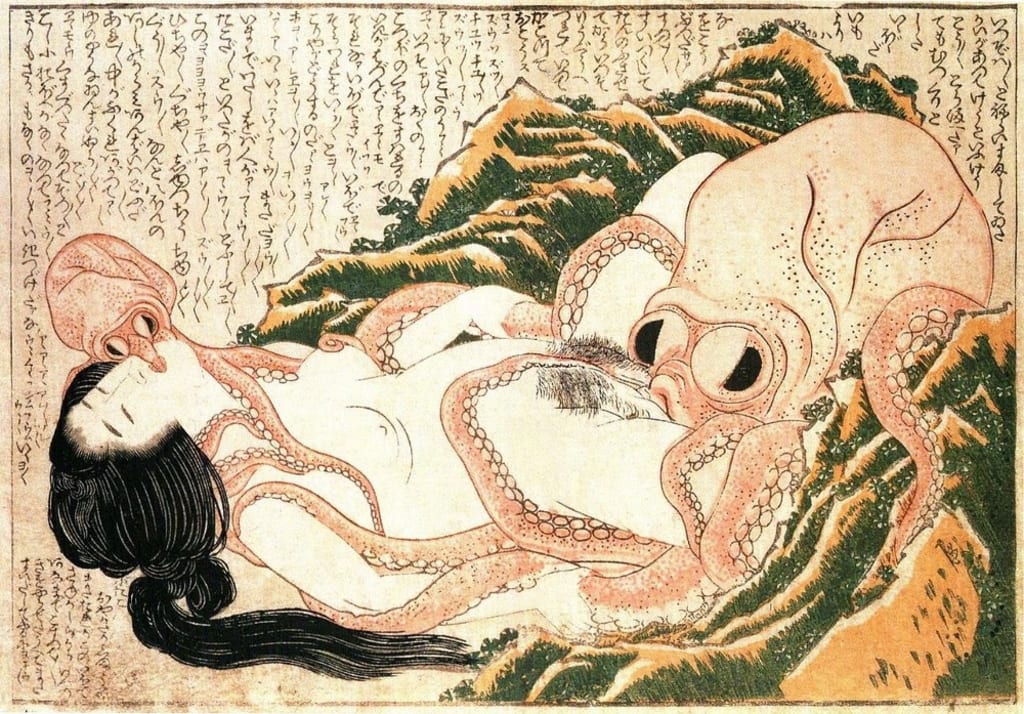
In 2017, my husband and I visited Bhutan. A beautiful landlocked country in Eastern Himalayas.
Can you take a wild guess at what bewildered us?
Bhutan's happiness index? No.
Thunder Dragon, Bhutanese national symbol? Not at all.
Phalluses. You heard me right. Bhutan celebrates phallic art and considers it as a traditional symbol of potency rather than overtly erotic. They are painted on homes, carved in wood and installed above doorways and under eaves to ward off evil.
Similarly, the erotic sculptures of Khajuraho, India, tend to be misconceived as an exclusive manual for sex positions. But if we deep dive into the spiritual context of the Kama Sutra, it is beyond sex - an art of living well, the nature of love and nurturing one's love life.
Erotic art and nudity have been part of art history forever. And when an art piece doesn't conform to set rules and conventions stirs controversy.
This article would unravel 5 paintings that ooze out erotica and have scandalized the art world.
1. The Dream of the Fisherman's Wife by Katsushika Hokusai (1814)
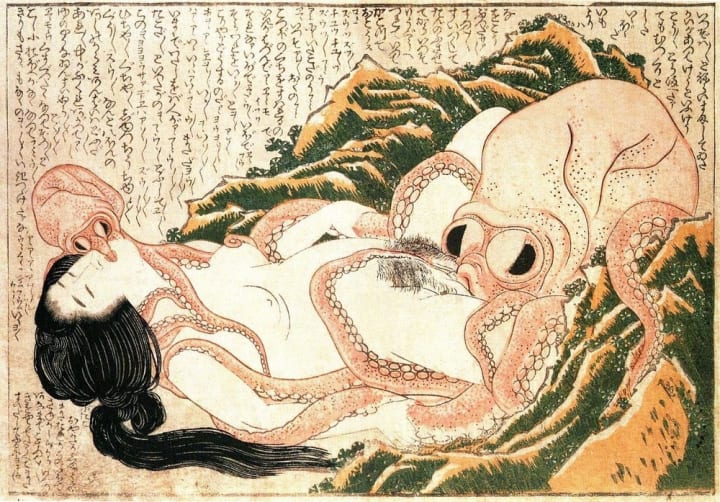
This is perhaps one of the most erotic images of all time and certainly, the one that has fascinated audiences for centuries.
A perfect example of Japanese shunga (erotic) art. The painting displays a fisherman's wife entwined sexually and deriving pleasure with a pair of octopuses, the smaller one kisses her while the larger one performs cunnilingus.
Do you recognize the artist's name, Katsushika Hokusai? Yes, he is the one behind "The Great Wave off Kanagawa" and is more popular for his landscape portraits than erotica.
One interpretation of this composition is that the Japanese tend to call it Tako to ama. It literally translates to "Octopus and Shell Diver" which has an entirely different meaning from the prevailing English title. The Japanese title shows the woman as an independent pearl diver who rather has a unique passionate encounter with an octopus.
While the English title - The Dream of the Fisherman's Wife - detaches her as an independent woman and portrays her as a desperate wife dreaming her husband to be a type of mollusk he fishes or nets for.
This iconic image became a precursor to tentacle erotica, a motif that became popular in modern Japanese pornography.
2. The Sin by Heinrich Lossow (1880)
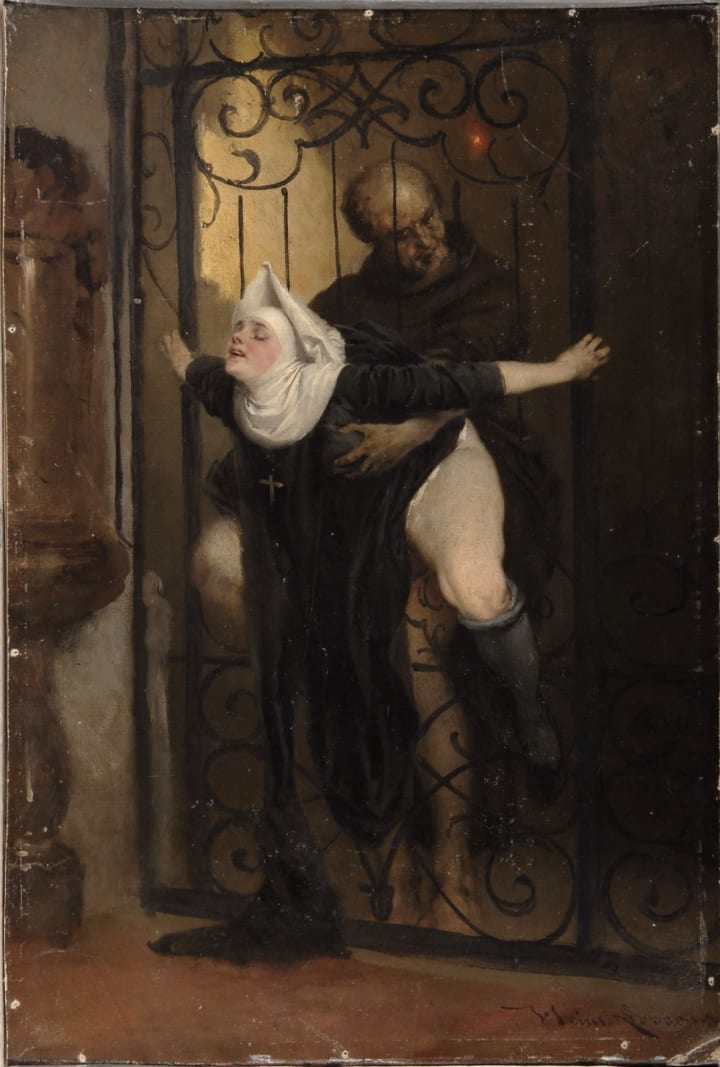
The Sin thematically displays "Banquet of Chestnuts", which was a scandalous dinner, allegedly held in the Papal Palace by the former Cardinal Cesare Borgia, the son of Pope Alexander VI on October 30, 1501.
The report was preserved in the Latin diary of the Protonotarius the Apostle, but its accuracy is disputed.
Burchard describes this scene in his diary:
"Son of Pope Alexander VI, hosted a banquet in the Papal Palace where fifty prostitutes were in attendance for the entertainment of the guests. "Following the supper, lampstands holding lighted candles were placed on the floor and chestnuts strewn about, which the prostitutes, naked and on their hands and knees, had to pick up with their mouths as they crawled in and out among the lampstands. The Pope watched and admired their noble parts". "Members of the clergy and other party guests had sex with the prostitutes for prizes. According to Burchard: "Prizes were offered - silken doublets, pairs of shoes, hats and other garments - for those men who were most successful with the prostitutes. Servants kept score of each man's orgasms, for the pope greatly admired virility; and measured a man's machismo by his ejaculative capacity."
It is interesting to think that this kind of painting was even partly tolerated during that era. Most of the story is speculative. Modern scholars reject the plausibility of the "Chestnut Banquet" as it was mentioned only in Burchard's memoirs.
3. Frenzy of Exultations by Władysław Podkowiński (1893)
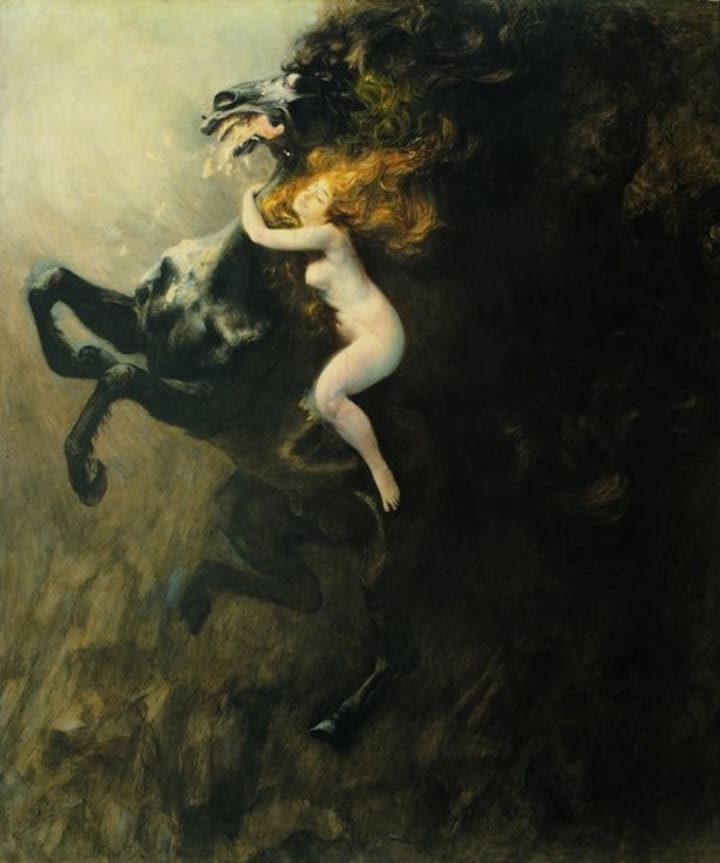
The Frenzy of Exultations, often called just 'the Frenzy' is probably Władysław Podkowiński's monumental composition.
It shows a naked woman passionately leaning over an agitated black horse. The horse has flared nostrils and foams at the mouth. The woman's eyes are closed and her blonde hair is entangled with the horse's mane.
Symbolically, The Frenzy depicts the destructive forces of instincts and passions. The woman is carried away by the erotic passion of a demonic horse, which is stronger than will.
It's a frenzy of sensual intoxication, but different from classical, medieval and philosophically promiscuous frenzies from the time before the French revolution. It's not even a romantic frenzy. This frenzy is directly linked with a frenzy of destruction, known from psychiatry - either murderous or suicidal.
4. Rokeby Venus by Diego Velázquez (1651)
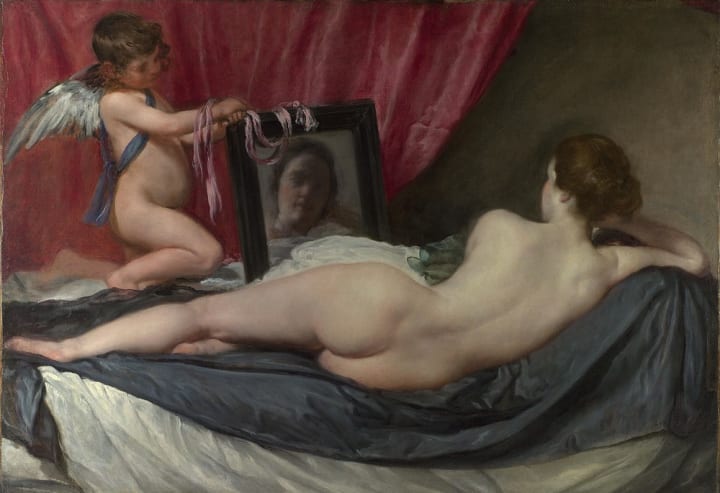
Undoubtedly, this is another erotically charged image of any era.
"She is seen as the paradigm of female beauty," says Times art critic Rachel Campbell-Johnston.
A model reclines on a bed with her back. The face of the nude model appears much older than her body in Cupid's mirror, concluding that beauty is ephemeral and "nothing lasts forever".
Another interesting fact is that the painting was slashed at least five times by a woman suffragette almost 100 years ago. The attacker, Mary Richardson, protested against the arrest of another suffragette, Emmeline Pankhurst.
"Slasher Mary", as the press dubbed her, later admitted that it wasn't just the picture's value - £45,000 in 1906 - that made it a target. It was "the way men visitors gaped at it all day long".
5. Olympia by Édouard Manet (1863)
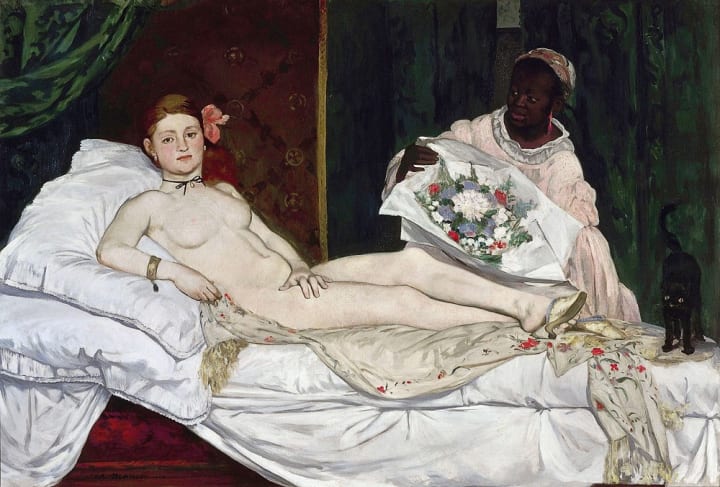
As we progressed into the modern period, artists switched from mythological women to real women. The painting Olympia was inspired by real-life women living in modern-day Paris and exposed prostitution in the 19th century. Women were merely used for pleasure in exchange for a few bucks.
Although this painting was inspired by Titian's The Venus of Urbino, Manet's creation was categorized as vulgar while the mythological painting became a magnum opus.
About the Creator
Kamna Kirti
Art enthusiast. I engage with art at a deep level. I also share insights about entrepreneurship, founders & nascent technologies.
https://linktr.ee/kamnakirti
Reader insights
Nice work
Very well written. Keep up the good work!
Top insights
Compelling and original writing
Creative use of language & vocab
Easy to read and follow
Well-structured & engaging content
Excellent storytelling
Original narrative & well developed characters
Expert insights and opinions
Arguments were carefully researched and presented
Eye opening
Niche topic & fresh perspectives
Heartfelt and relatable
The story invoked strong personal emotions
Masterful proofreading
Zero grammar & spelling mistakes
On-point and relevant
Writing reflected the title & theme



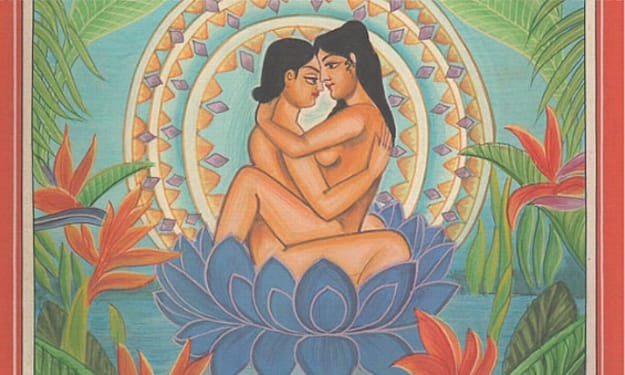



Comments (8)
Very well written analysis of the works depicted. I am a particular fan of 'The Sin by Heinrich Lossow' since it touches my irreverent heart!
Nominating you for the Vocal Awards: https://awards.vocal.media/nomination?grsf=lola-6azd28 Good luck!
This is a great Top Story. We are Featuring It in Week Six of Our Community Adventure in The Vocal Social Society on Facebook and would love for you to join us there
Educational and shows the great love of creativity.
Excellent choices! The Dream of the Fisherman's Wife is extraordinary.
Keep up the excellent work.
Very interesting and educational, and not a little startling. The only one of the five I was familiar with was the Rokeby Venus. Thanks.
Is the Chestnut Banquet the first Eyes Wide Shut party? I was surprised not to see Nude Descending a Staircase. Will your study of erotic paintings move into the 19th and 20th centuries? I really love reading your articles.